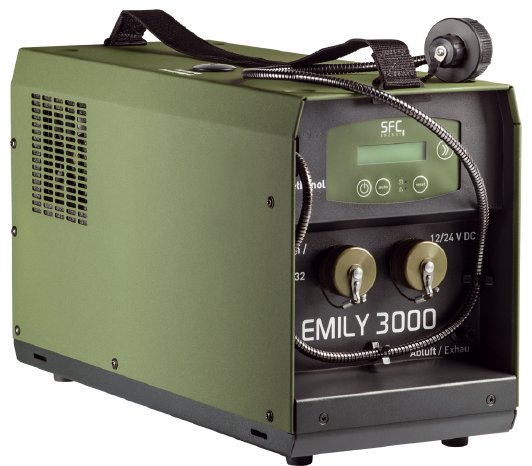- SFC Energy’s EMILY 3000 fuel cell delivers up to 21 days of power autonomy to the vehicle.
- Fuel cell was selected for its performance, reliability, tactical benefits and environmental friendliness.
- Modification of the vehicle was driven by the requirements of UK’s Army Warfighting Experiment 2017 (AWE 17) for increased capacity.
As demonstrated during the recent DSEI exhibition in London, the MRZR-D4 is an ultra-light tactical vehicle developed by Polaris Defense for the demanding mobility needs of international special operations, expeditionary and light infantry forces in off-road missions and emerging threats. On board of the MRZR-D4 an EMILY 3000 fuel cell provides sustainable, reliable tactical power for extended mobility and enhanced mission endurance.
“Polaris Defense selected our EMILY fuel cell for integration into their vehicle for three reasons,” says Dr. Peter Podesser, CEO at SFC Energy. “One: They needed a reliable, easy to use, autonomous power source on board that recharges batteries anytime, anywhere, in any weather. Two: They wanted a covert power source with minimal noise and heat signatures. And three: They also wanted a sustainable power source with no emissions. The EMILY fuel cell is all that and more. We see a bright future for our SFC fuel cells in portable, mobile, vehicle-based and stationary defense applications worldwide.”
Numerous international NATO and global defense organizations use SFC Energy fuel cell products. SFC fuel cell and accessory products carry a NATO stock number codification and are approved for air transportation according to UN3473.
Additional information on the SFC Energy’s off grid power portfolio for defense, security & safety, oil & gas, wind, traffic management, environmental and telecommunications applications at www.sfc-defense.com, www.efoy-pro.com and at www.sfc.com.


